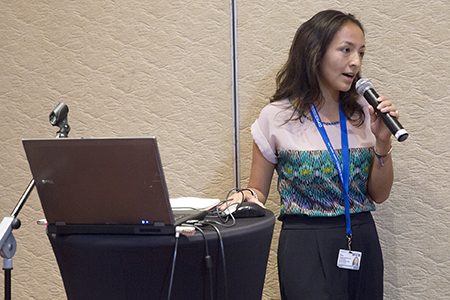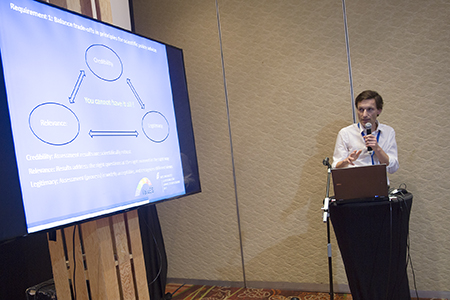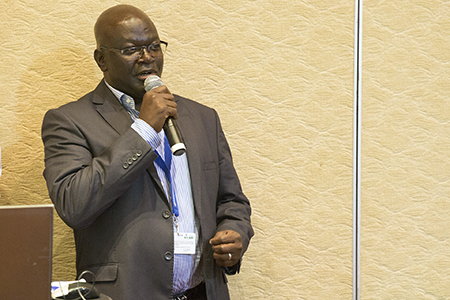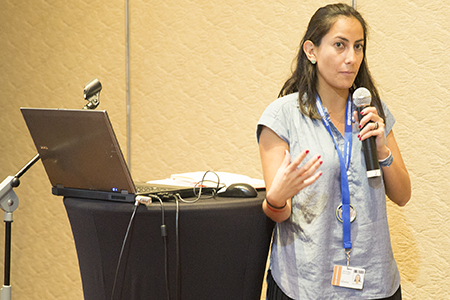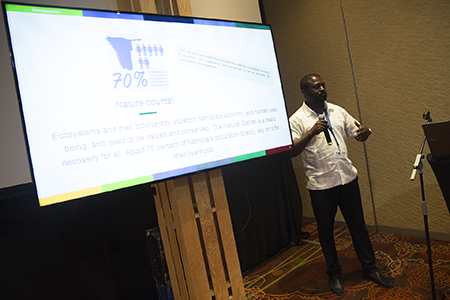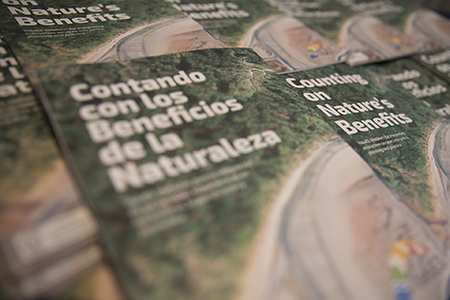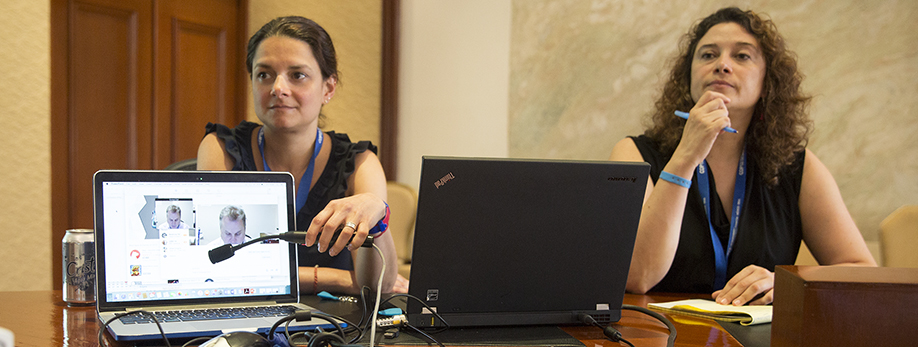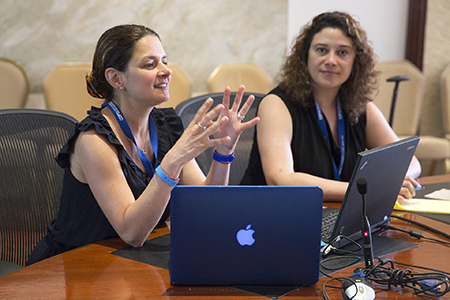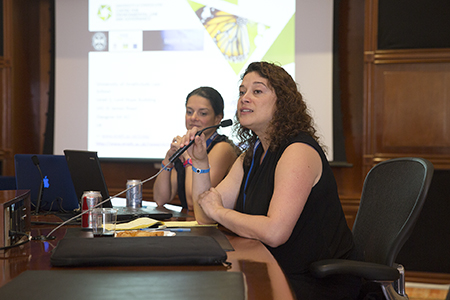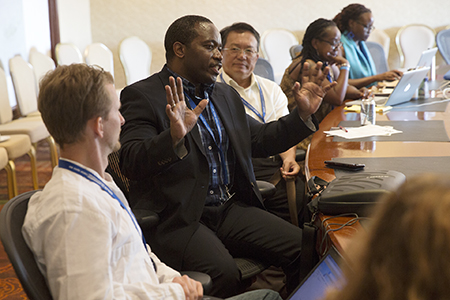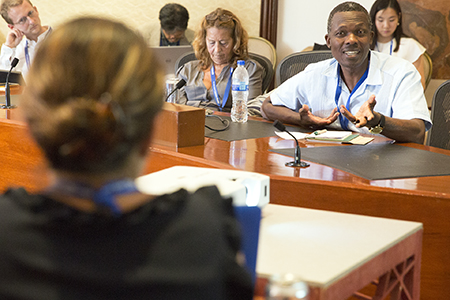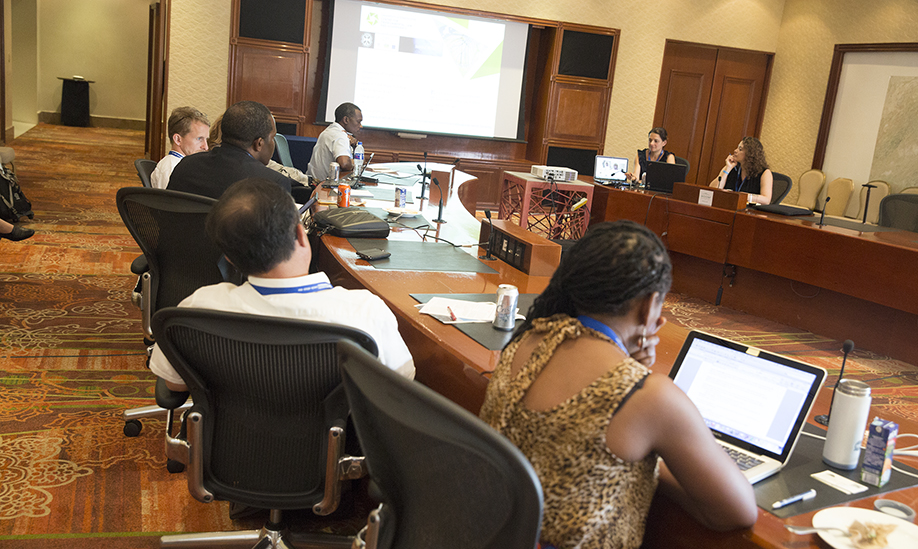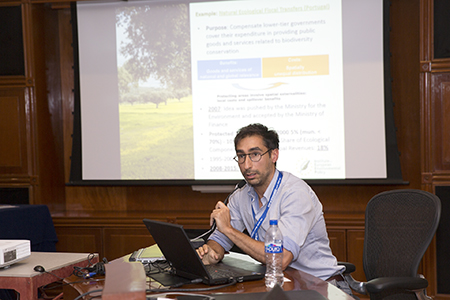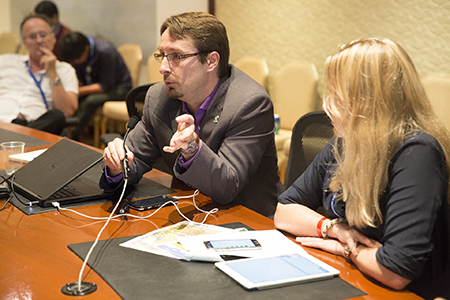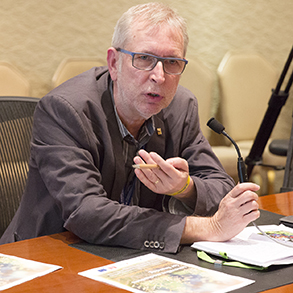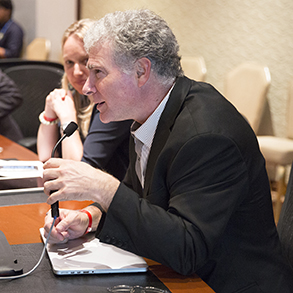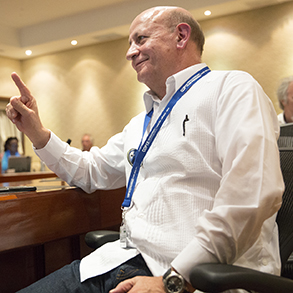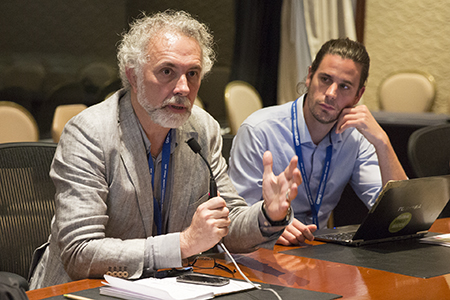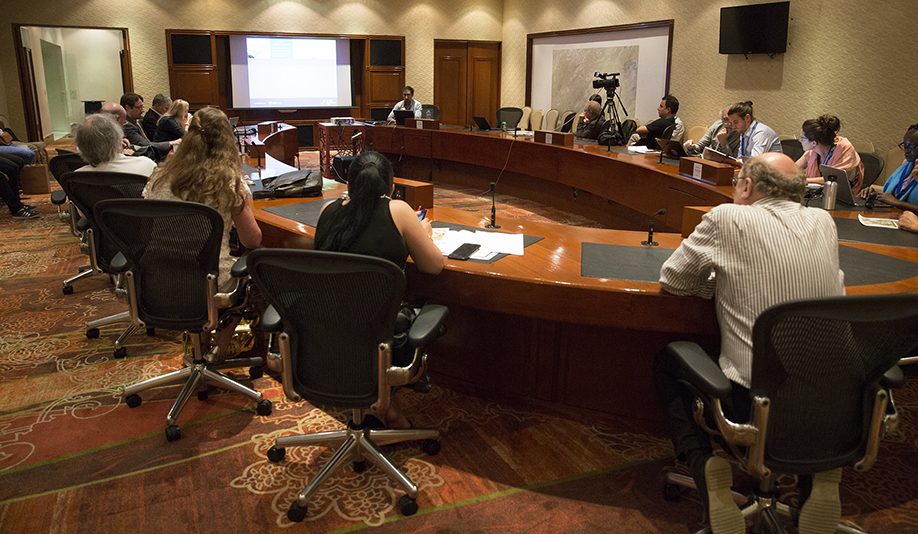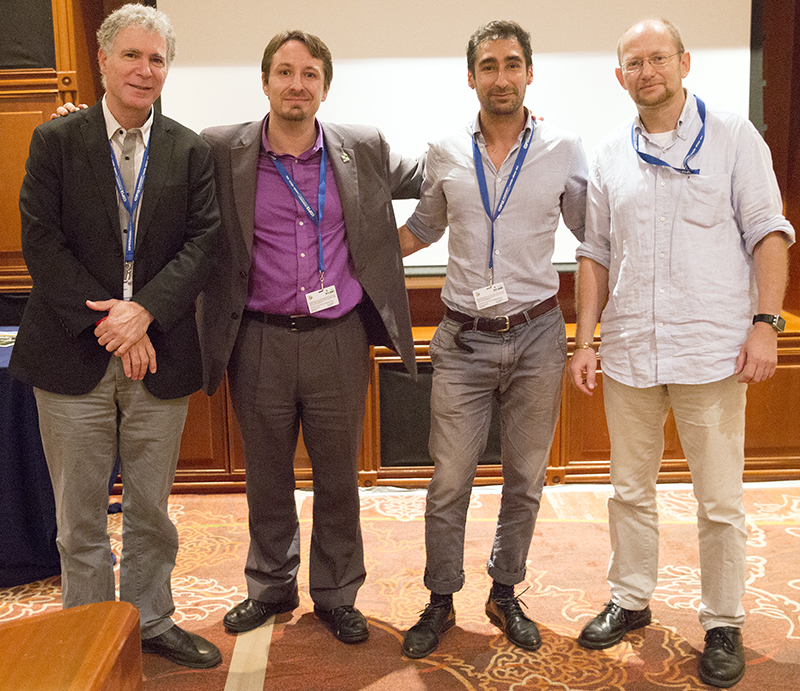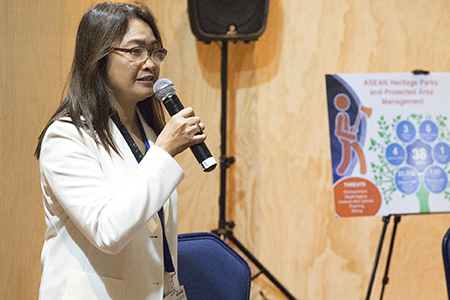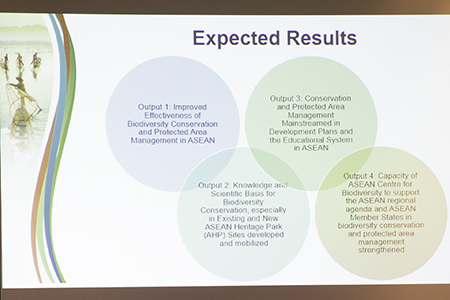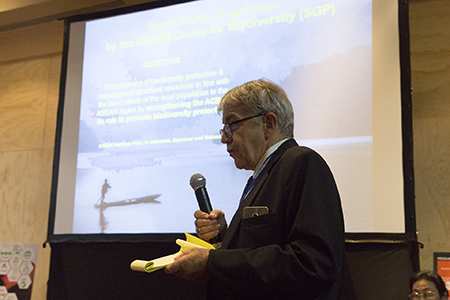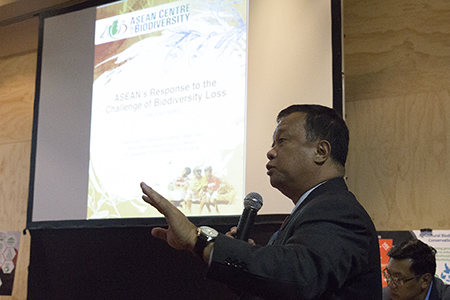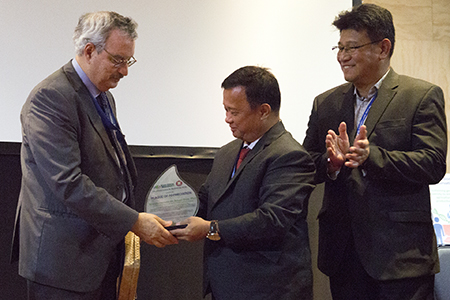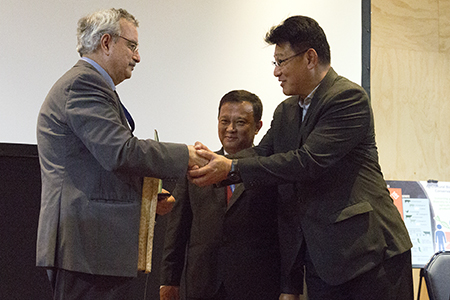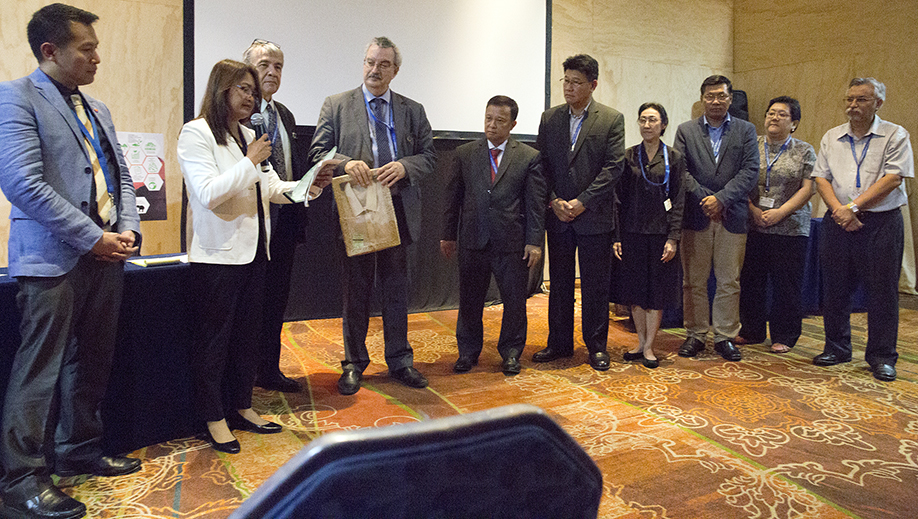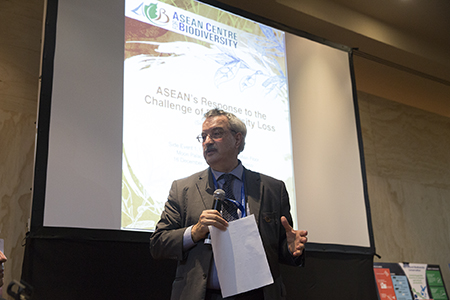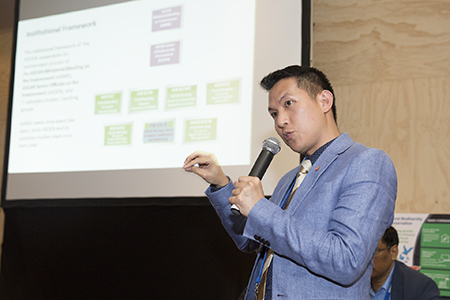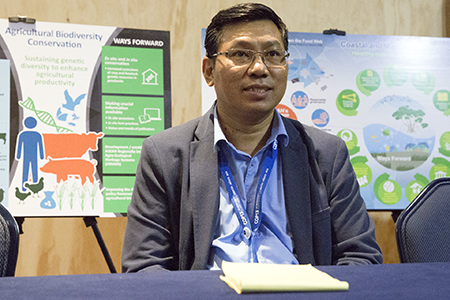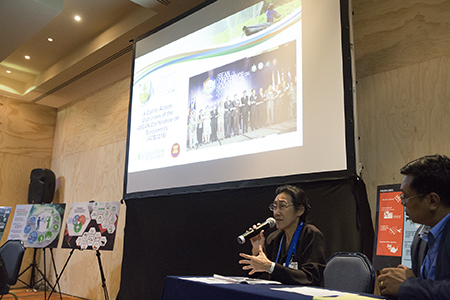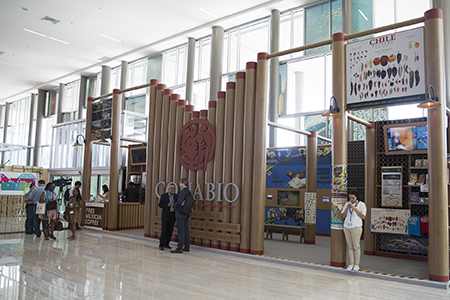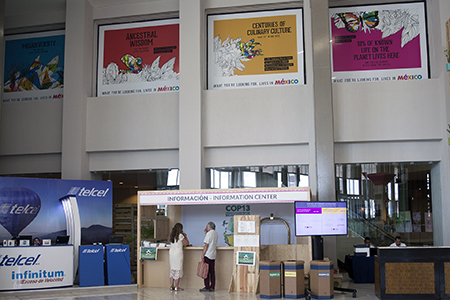Coverage of Selected Side Events at the UN Biodiversity Conference
5-17 December 2016 | Cancún, Mexico
Events Covered on Friday, 16 December 2016
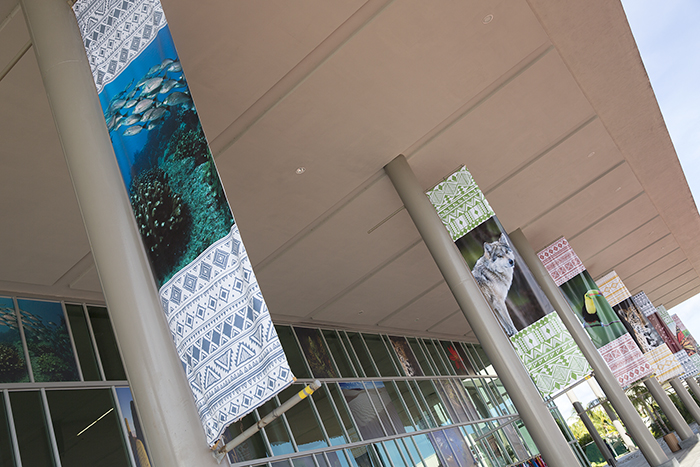
|
||
|
|
||
|
IISD Reporting Services, through its ENBOTS Meeting Coverage, is providing daily web coverage of selected side-events from the UN Biodiversity Conference. | ||
Increasing the Policy Impact of Ecosystem Service Assessments and Valuations – Insights from Assessment Processes in Côte d’Ivoire, Peru, Namibia and Mexico Presented by the Deutsche Gesellschaft für Internationale Zusammenarbeit GmbH (GIZ), the Mexican Commission of National Protected Areas (CONANP), and the Governments of Côte d’Ivoire, Peru and Namibia
|
This event, moderated by Paulina Campos, GIZ, discussed key findings from a review of assessments in three countries on how to mainstream the ecosystem services concept into sectoral and cross-sectoral policies and plans for biodiversity conservation. Elsa Nickel, Director General, German Federal Ministry for the Environment, Nature Conservation, Building and Nuclear Safety (BMUB), identified three ways of improving ecosystem services for decision making through: a systematic consideration of how economic activities depend on ecosystem services; consideration of risks to human wellbeing from ecosystem degradation; and assessment and valuation of ecosystem services. Augustin Berghöfer, Helmholtz Zentrum für Umweltforschung (UFZ), identified three requirements for increasing the policy impact of ecosystem service assessments and valuations (ESAVs), including: the need to balance trade-offs between the credibility, relevance and legitimacy of scientific policy advice; closing the loop between ESAV and the policy setting; and tailoring the ESAV to a particular context. He noted three options for meeting these requirements, including: investing in scoping; jointly designing ESAVs without leaving it to technical experts; and using the ESAV process as a “vehicle” for adopting an ecosystem service lens. Lucía Ruiz, CONANP, Mexico, spoke on protected areas ecosystem valuation efforts in Mexico, noting findings that show: the Cabo Pulmo National Park contributes to maintain the fisheries sector; the value of the coral reefs of Cozumel Island for tourism; and the value of Iztaccíhuatl-Popocatépetl National Park for water provision. She stressed the need to integrate information from ecosystem valuation into institutional messages and discourses. Adama Tondossama, National Parks Authority (OIPR), Côte d’Ivoire, described the assessment and valuation of ecosystem services for consolidating political and financial support for the management of the Taï National Park in Côte d’Ivoire. He noted the strategic selection of ecosystem services, particularly for carbon sequestration provided by avoided deforestation, to better integrate their values in line with regional and national development plans. Ferdinand Mwapopi, Ministry of Environment and Tourism, Namibia, presented on experiences with ecosystem services assessments in his country. He highlighted this process has involved: studies to identify, delineate and assess ecosystems; the identification of ecosystem services and development of an ecosystem services inventory; prioritization of certain ecosystem services given limited resources; and capacity development. In discussion, participants identified, inter alia: how to promote cross-sectoral communication between government ministries; the challenge of defending values identified for ecosystem services; and an overview of methods available to conduct ecosystem services assessments relevant to context. |
||
|
|
|
|
|
|
|
Mainstreaming Biodiversity in the Fisheries Sector: The Role of the Sustainable Development Goals (SDGs) and of Ecosystem Services for Poverty Alleviation Presented by: the Strathclyde Centre for Environmental Law & Governance (SCELG), the University of Edinburgh; the World Wildlife Fund; and the Global Ocean Biodiversity Initiative
|
This event, moderated by Elisa Morgera, SCELG, explored the role of marine ecosystem services to alleviate poverty, with particular attention given to the fair and equitable sharing of benefits arising from sustainable fisheries with small-scale fishing communities. Panelists shared key research findings from an interdisciplinary and multi-scale assessment of fisheries governance by academics and practitioners with expertise in international fisheries law and policy, management, science and economics. Setting the stage for the event, Morgera noted the opportunities of fisheries-relevant Aichi Biodiversity Targets and the SDGs, particularly SDG 14, on the sustainable use of marine resources, for mainstreaming in the fisheries sector. Daniela Diz, SCELG, introduced the Marine Benefits project based at the University of Edinburgh and SCELG and funded by the Ecosystem Services for Poverty Alleviation programme, aimed at investigating fair and equitable benefit sharing from sustainable fisheries. Diz said the notion of ecosystem services is less well developed in marine environments than in terrestrial areas. She further reported that the identification of beneficiaries is ambiguous, and that there is a need for multi-scalar considerations, especially in the context of transboundary marine environments, highlighting the broader frame provided by the Ecosystem Approach and interlinkages with the SDGs and Aichi Biodiversity Targets. Andrew Kenny, Centre for Environment, Fisheries and Aquaculture Science (CEFAS), via video, discussed an ecosystem approach to fisheries management to achieve the SDGs, acknowledging that SDG 14.4 (achieving maximum sustainable yield by 2020) and the UN World Oceans Assessment are laudable goals but present challenges to implementation. He proposed a three-step science-based ecosystem management approach, involving mapping ecosystem production areas, identifying vulnerable marine ecosystems, and undertaking a stock assessment of the result. He stressed the need to: target fisheries management in areas of greatest need; protect essential fish habitats; identify multi-species models; and implement appropriate data-limited stock assessment methods and fisheries management control measures. Morgera drew attention to various elements and gaps to be addressed by the project in regards to SDG 14, including: the lack of mention of ecosystem services; the missing link to social and cultural aspects; and the risk of addressing one aspect of the goal more than others. She reported that contributions from the project would be published in an open access special issue of the journal of Marine Policy focusing on SDGs and sustainable fisheries. She highlighted papers on a wide range of interdisciplinary fields, including: science-based fisheries management; other effective conservation measures; fiscal reforms for sustainable marine fisheries governance; and marine technology transfer. Reporting on marine spatial planning (MSP) for SDG synergies and biodiversity mainstreaming, Morgera reported on stakeholder baselines, which will be used to describe past and future anticipated uses of ecosystem services. In the discussions, participants considered, inter alia: how to harmonize science and traditional knowledge into a science-based ecosystem approach to fisheries management; transboundary collection of data on fishstocks; the political challenges posed by transboundary fishstocks management; the need for an emphasis on risk-based approaches to fisheries management in regions that are data-poor; and the need to incorporate measures to address climate change and pollution in the ecosystem approach to fisheries management. |
||
|
|
|
|
|
Participants during the discussion | ||
|
Contact:
- Daniela Diz (Coordinator) | daniela.diz@strath.ac.uk
- Elisa Morgera (Coordinator) | elisa.morgera@strath.ac.uk
More Information:
Innovative Mechanisms for Financing Biodiversity Conservation:
An Exchange of Experiences Between Europe, Mexico and ChinaPresented by the European Commission (EC) and the Centre de Coopération Internationale en Recherche Agronomique pour le Développement (CIRAD)
|
This event, moderated by Driss Ezzine de Blas, CIRAD, included an exchange of experiences and information between experts on innovative financing for biodiversity conservation from Mexico, the European Union (EU) and China. In brief remarks, Laure Ledoux, EC, highlighted the EU’s interest in learning about other countries’ experiences of innovative financing mechanisms (IFMs) though its Partnership Instrument. Lorenzo J. de Rosenzweig Pasquel, Mexican Fund for the Conservation of Nature, noted his organization is moving from philanthropy to impact investment for biodiversity conservation in Mexico. Among examples, he highlighted: financial support to communities acting as custodians of the Monarch Butterfly Biosphere Reserve, as a result of which illegal logging has “disappeared”; the training of 21 community forestry enterprises to access commercial credits to improve forest management as well as livelihoods; and a planned project to involve various donors for the development of an alternative economy for a region where the critically endangered vaquita is “collateral damage” of illegal totoaba fishing. David Meyers, Biodiversity Finance Initiative of the UN Development Programme (BIOFIN), reviewed IFMs, in particular those in China, noting that the country is one of the 12 most biodiverse countries in the world, has a high number of protected areas, and requires more than €4 billion to finance these protected areas. He highlighted recent innovative finance workshops in China, and said 107 IFMs were identified, including ecological fiscal transfers, ecotourism and payment for ecosystem services (PES). He pointed to IFMs, including: China’s eco-compensation policy; PES projects like “Grain for Green”; biodiversity offsets, highlighting the Forest Vegetation Restoration Fee; biodiversity in climate change funding, pointing to finances from REDD+; biodiversity in international development finance; and capital markets, noting that China has the second largest Green Bond in the world. Colin Herron, The Nature Conservancy (TNC), described the Water Fund as a multi-stakeholder governance mechanism, with science-based decision making and sustainable financing, which is ready deployability. He highlighted that Water Fund partnerships should comprise competing private sector partners, civil society, academia and sports teams, supporting a central theme. On financing, he highlighted the Fondo para la Protección del Agua, which uses a percentage of income from the water utility that is paid into an interest-generating trust fund to finance conservation efforts. He underscored the need to find the “sweet spot” between ecosystem services and public interest, and for a science-based approach to draw investment. Ezzine de Blas highlighted various examples of innovative financing instruments in Europe, including: ecological fiscal transfers in Portugal whereby states have been compensated for their expenditure on biodiversity conservation, which led to six additional regional protected areas in 2008-2016; and the Natural Capital Financing Facility in which the European Investment Bank makes initial investments in natural capital that are expected to attract additional private sector investments. On lessons, he highlighted the need to consider how IFMs can work together with traditional funding mechanisms for a “policy mix” and the possibility of learning from Mexico’s development of dynamic partnerships. In the discussion, participants considered, inter alia: the role of public versus private financing in innovative financial mechanisms; how to bridge the gap between financing and needs; China’s laudable reforestation efforts; and the controversy over water ownership in Mexico. They also raised, among others, the need to base decisions not just on science, but on socio-political questions, such as: whether communities or large soft drink corporations receive the benefits of water conservation, and whether to place offsetting in the same “package” as nature conservation given that it maintains the status quo and is paired with the “destruction” of nature elsewhere. |
||
|
|
|
|
|
|
|
Participants during the discussion | ||
|
|
Association of Southeast Asian Nations’ (ASEAN) Response to the Challenge of Biodiversity Loss Presented by the ASEAN Centre for Biodiversity (ACB), the Convention on Biological Diversity (CBD) and the Deutsche Gesellschaft für Internationale Zusammenarbeit GmbH (GIZ)
|
This event, moderated by Clarissa Arida, ACB, brought together key partners and stakeholders to share progress and experiences on the ASEAN Heritage Parks (AHP) Programme. The second edition of the ASEAN Biodiversity Outlook (ABO2), showcasing developments for biodiversity conservation in the region, was also launched at the event. |
||
|
|
|
|
|
A plaque of appreciation is presented to Braulio Ferreira de Souza Dias, Executive Secretary, CBD, in recognition of his support for regional cooperation for biodiversity conservation. | ||
|
|
|
|
|
|
|
|
Around the Venue
|
|
|
|
The Earth Negotiations Bulletin on the Side (ENBOTS) © enb@iisd.org is a special publication of the International Institute for Sustainable Development (IISD). This issue has been written by Tallash Kantai, Vijay Krishnan Kolinjivadi, Ph.D., Dorothy Wanja Nyingi, Ph.D., and Cleo Verkuijl. The Digital Editor is Diego Noguera. The Editor is Leila Mead leila@iisd.org. The Director of IISD Reporting Services is Langston James “Kimo” Goree VI kimo@iisd.org. Specific funding for coverage of selected side events from the UN Biodiversity Conference has been provided by the Secretariat of Environment and Natural Resources of Mexico (SEMARNAT). The opinions expressed in ENBOTS are those of the authors and do not necessarily reflect the views of IISD and funders. Excerpts from ENBOTS may be used in non-commercial publications only with appropriate academic citation. For permission to use this material in commercial publications, contact the Director of IISD Reporting Services at kimo@iisd.org. Electronic versions of issues of ENBOTS from the UN Biodiversity Conference can be found on the IISD Reporting Services website at http://enb.iisd.org/biodiv/cop13/enbots/. The ENBOTS Team at the UN Biodiversity Conference can be contacted by e-mail at tallash@iisd.org. |
||
|
IISD Reporting Services is grateful to the many donors of the Earth Negotiations Bulletin (ENB) and recognizes the following as core contributors to the ENB: the European Union, the Government of Switzerland (the Swiss Federal Office for the Environment (FOEN)), the Italian Ministry for the Environment, Land and Sea, and the Kingdom of Saudi Arabia. General Support for the Bulletin during 2016 is provided by the Austrian Federal Ministry of Agriculture, Forestry, Environment and Water Management (BMLFUW), the German Federal Ministry for the Environment, Nature Conservation, Building and Nuclear Safety (BMUB), the New Zealand Ministry of Foreign Affairs and Trade, SWAN International, the Finnish Ministry for Foreign Affairs, the Japanese Ministry of Environment (through the Institute for Global Environmental Strategies - IGES), the United Nations Environment Programme (UNEP), and the International Development Research Centre (IDRC). Funding for translation of the Bulletin into French has been provided by the Government of France, the Wallonia, Québec, and the International Organization of La Francophonie/Institute for Sustainable Development of La Francophonie (IOF/IFDD). |
||


